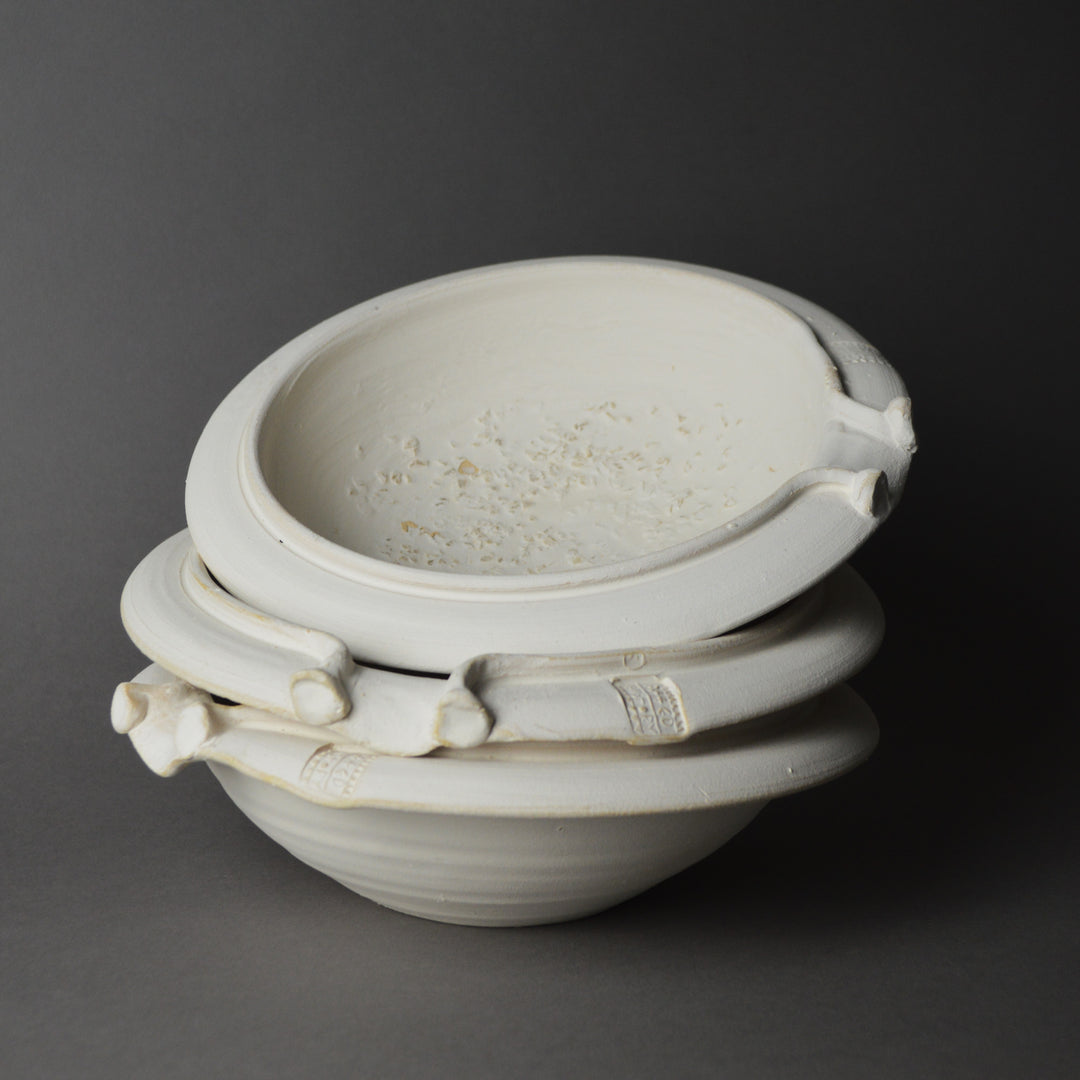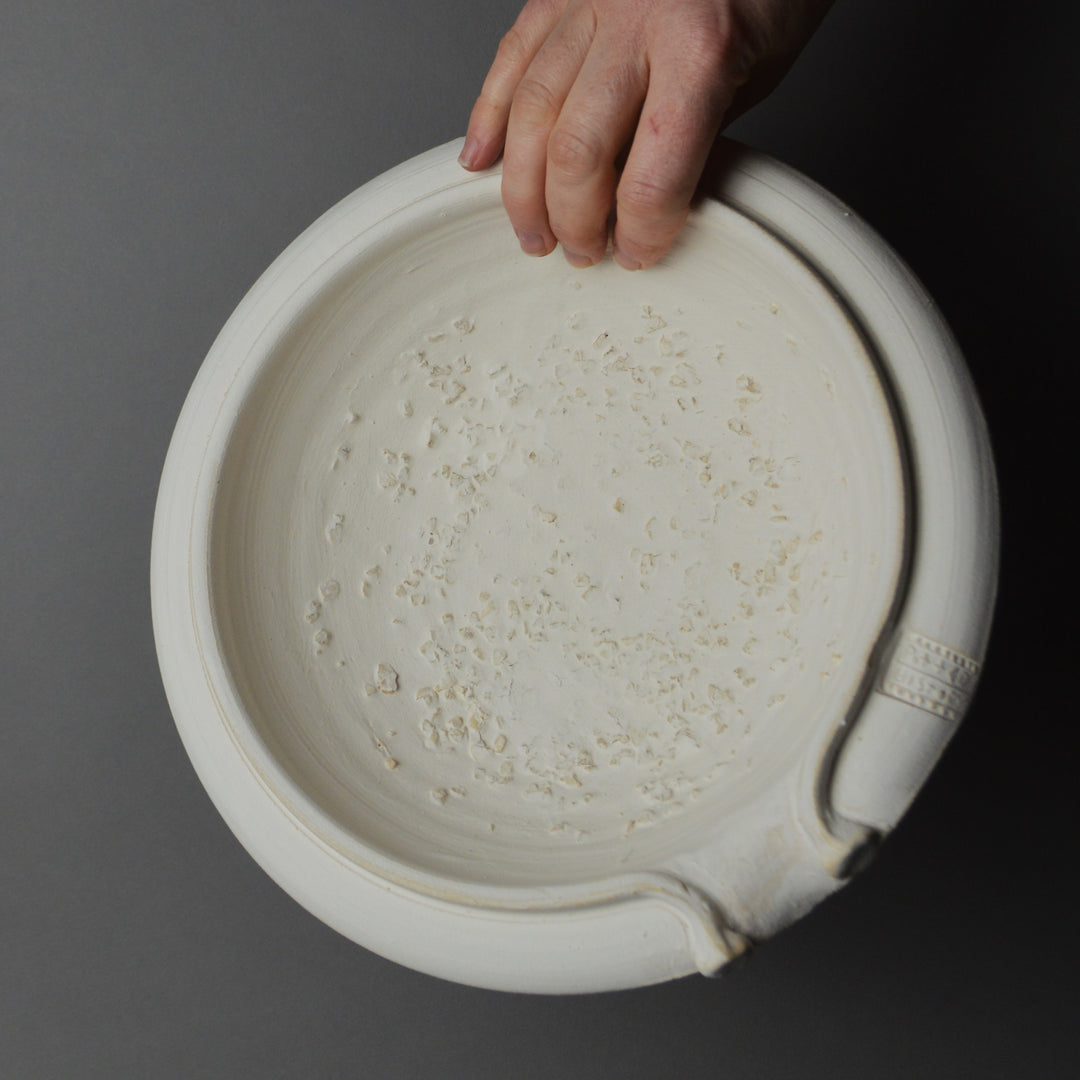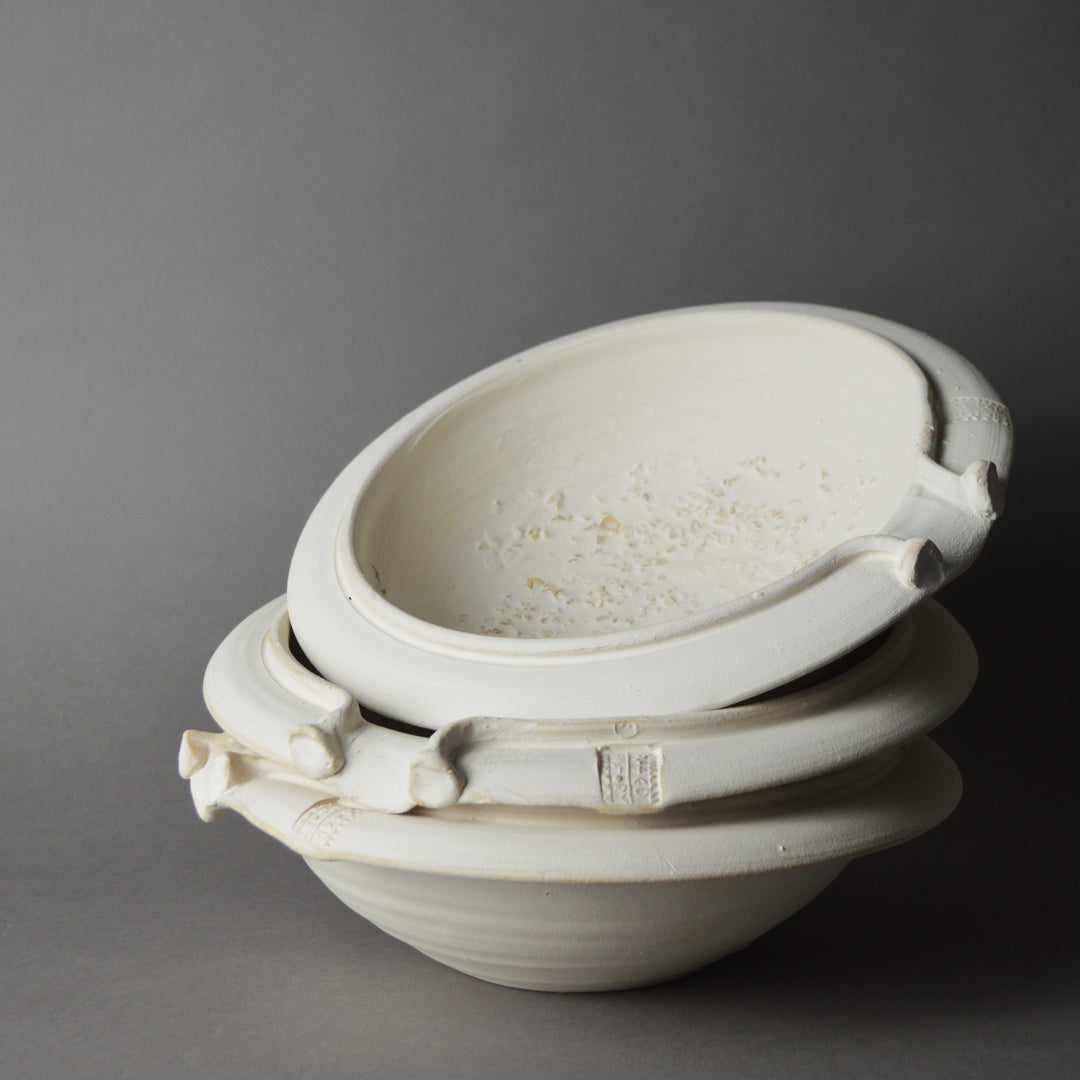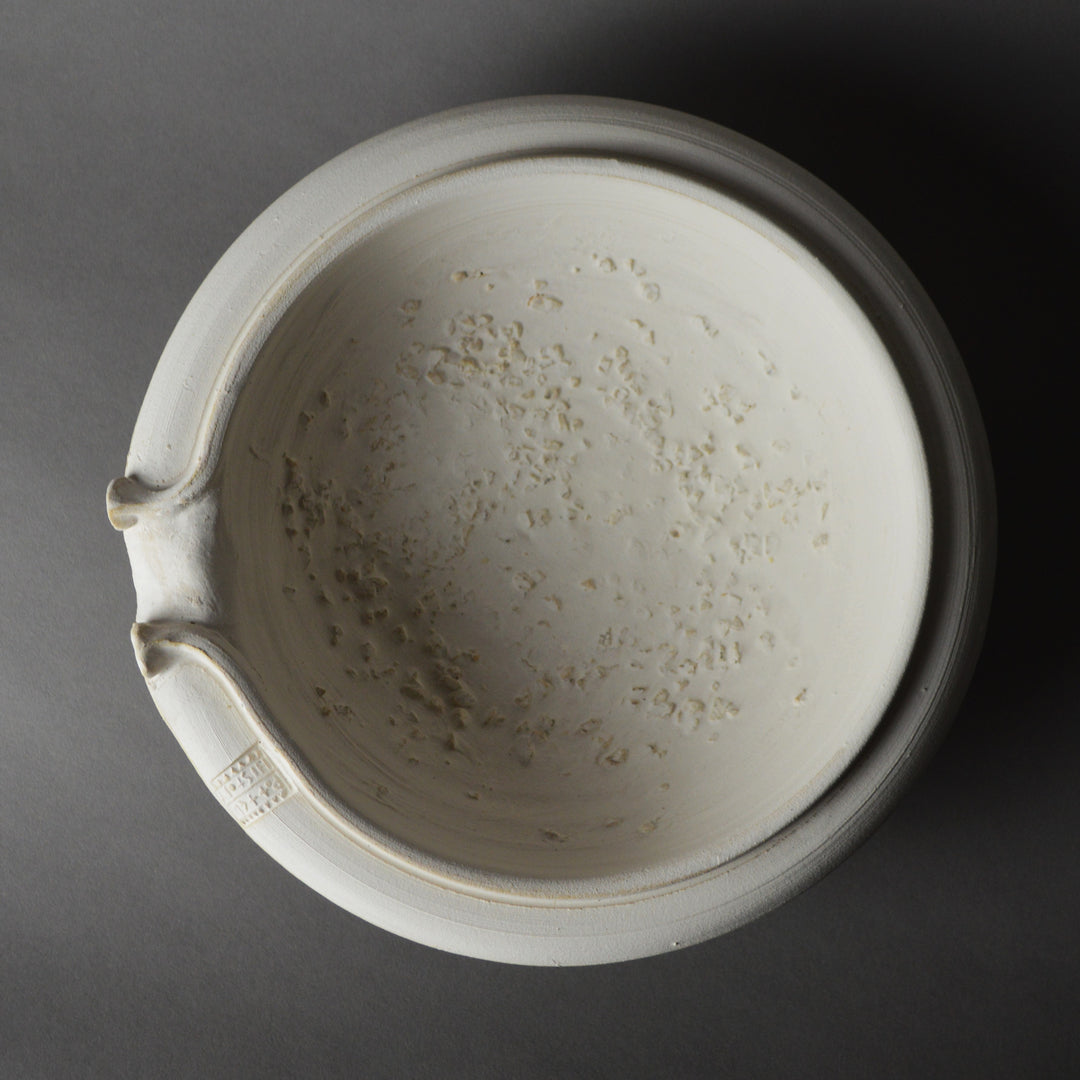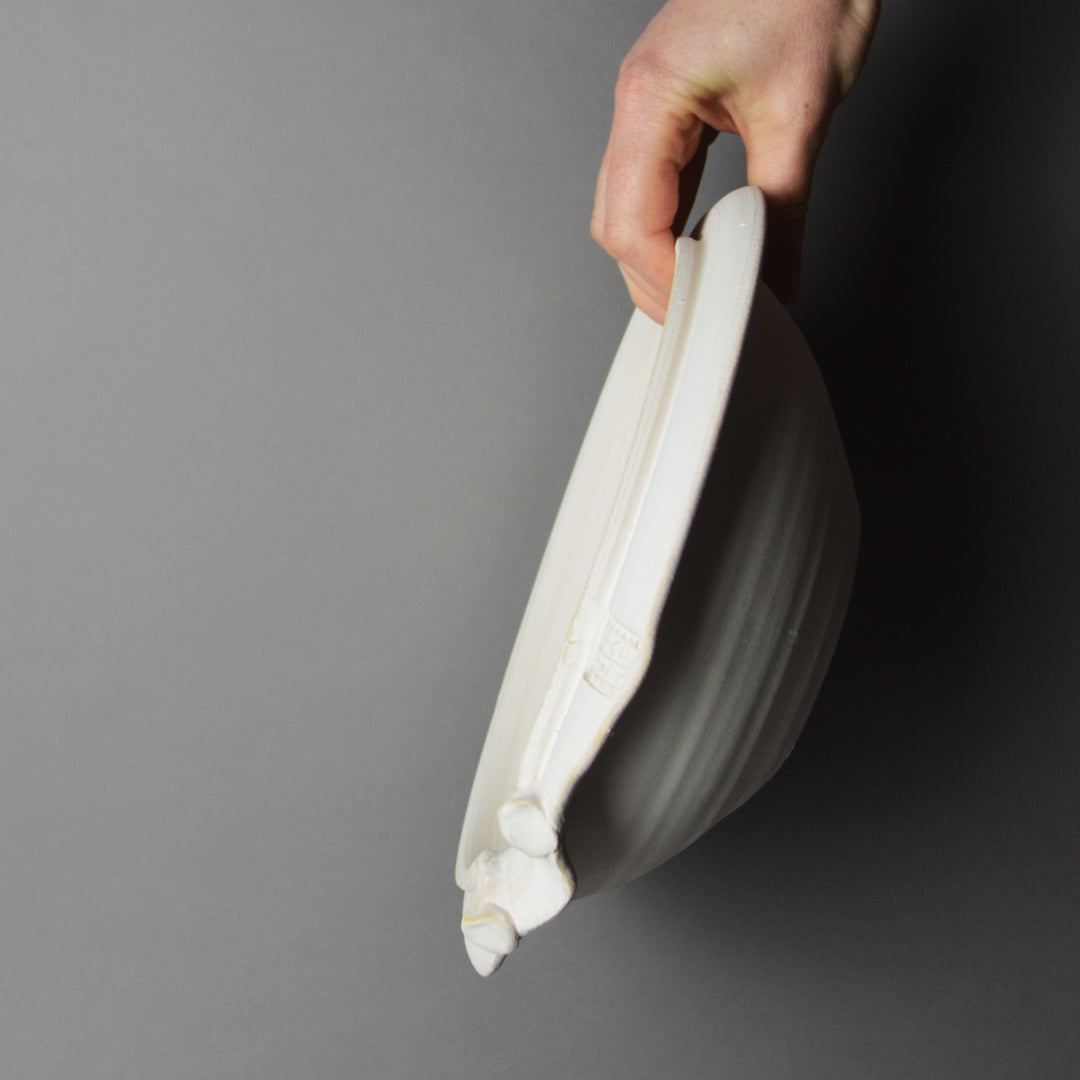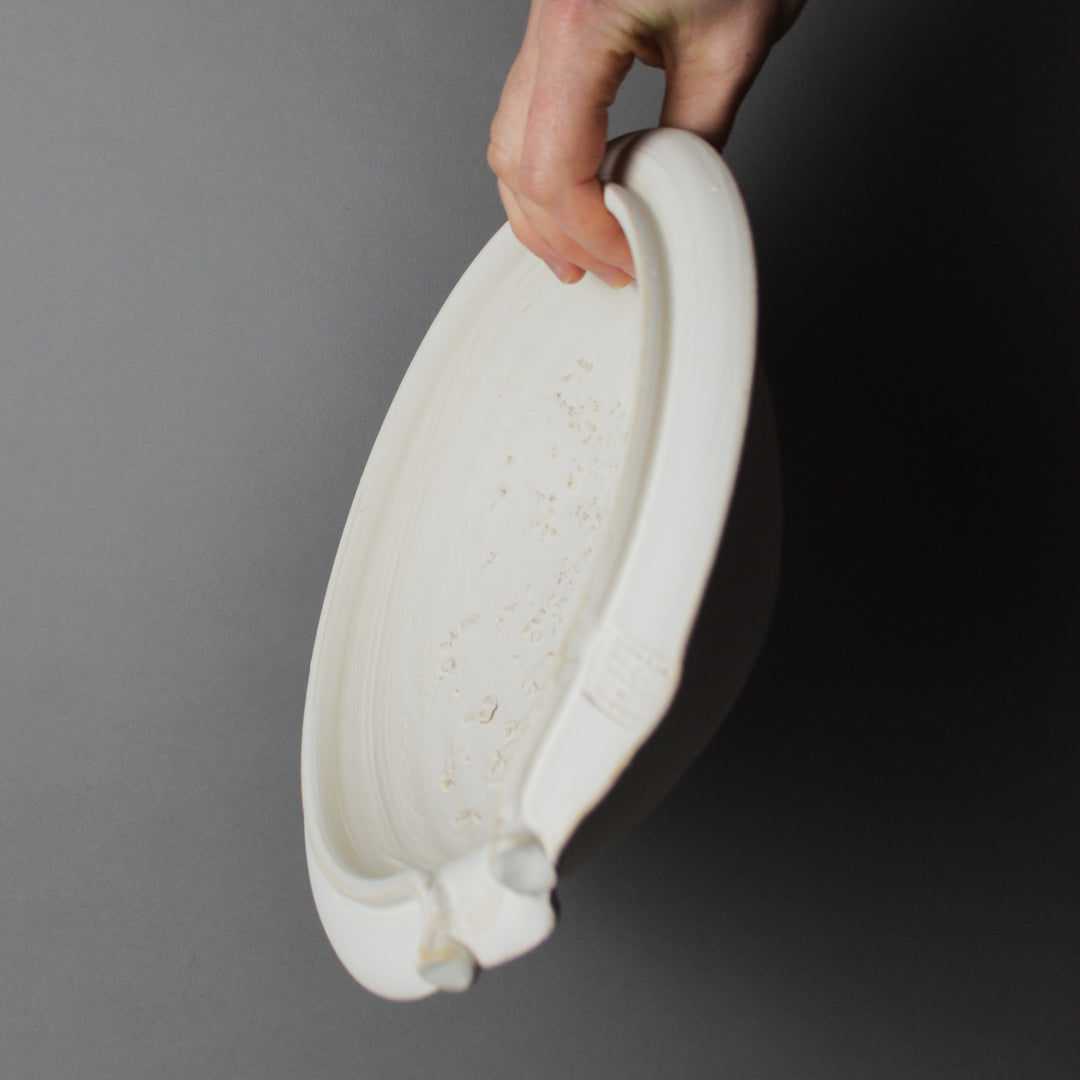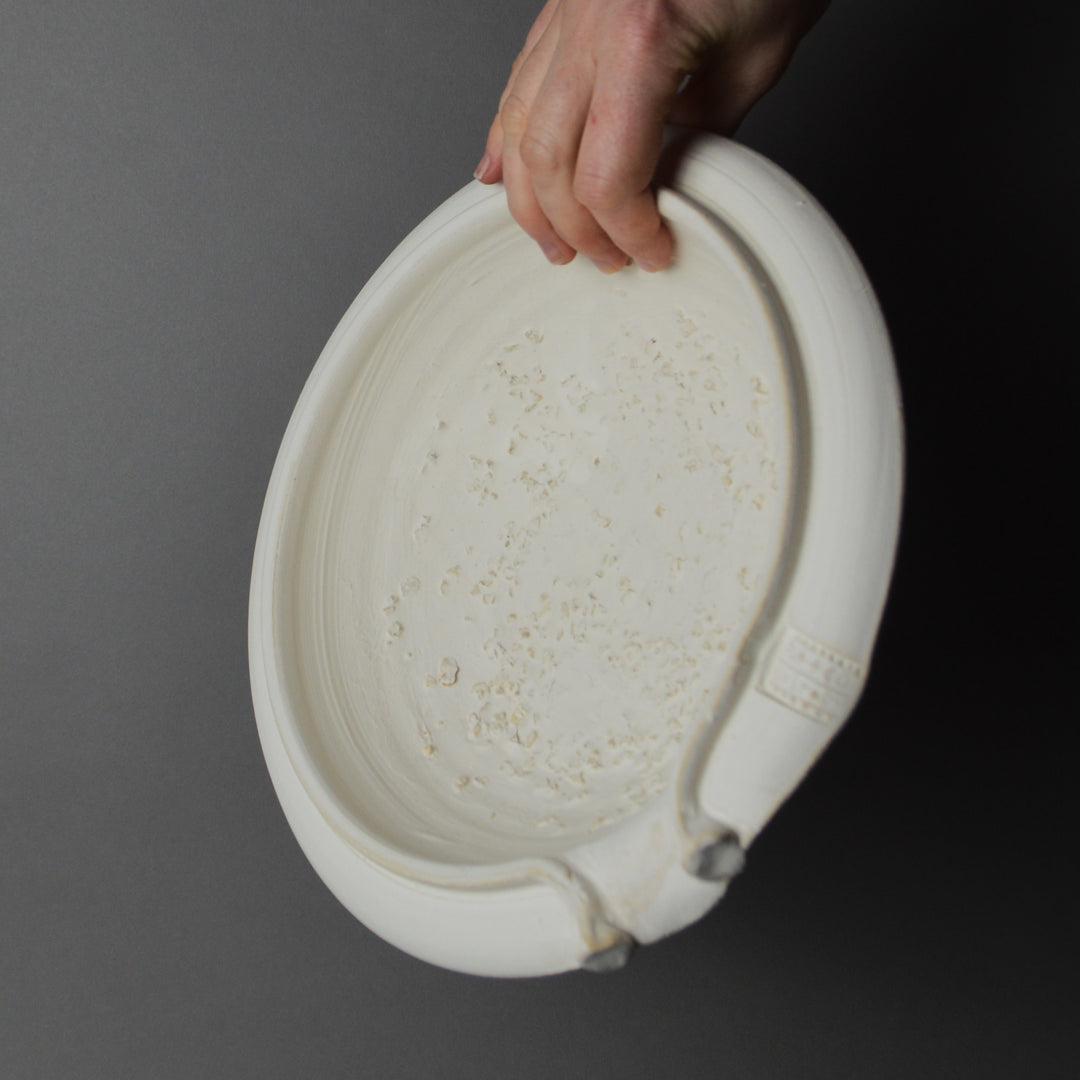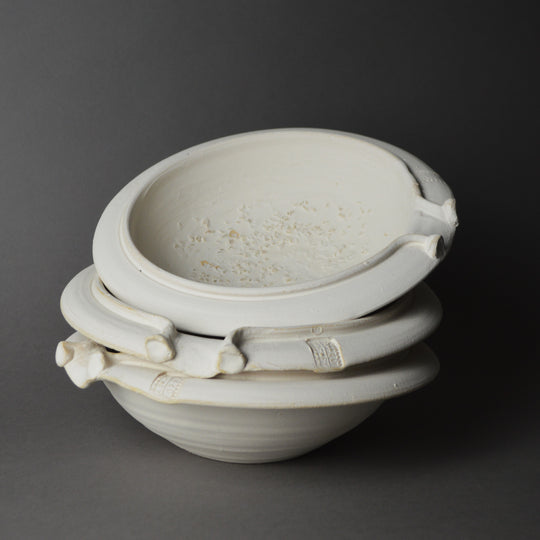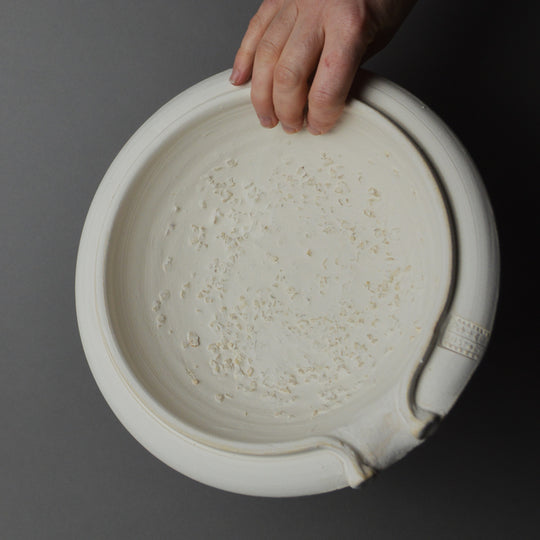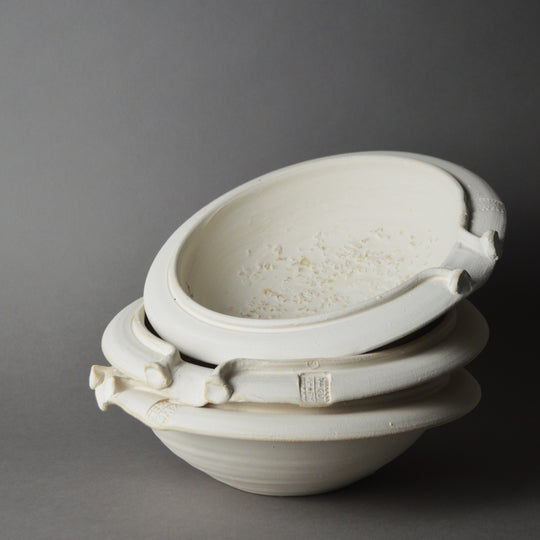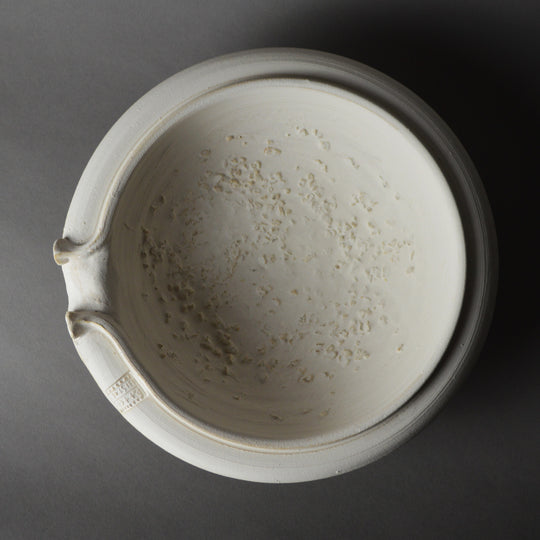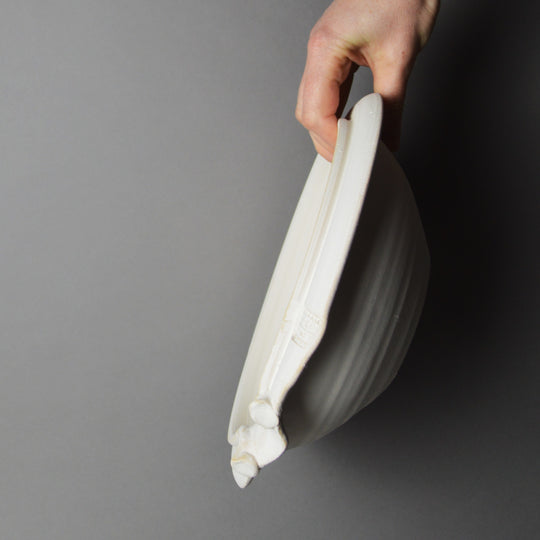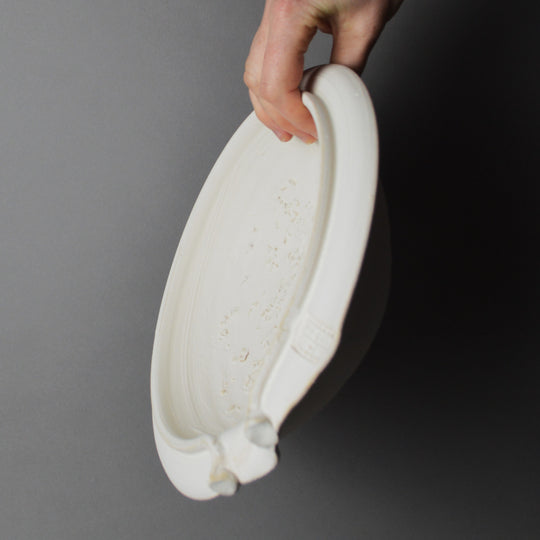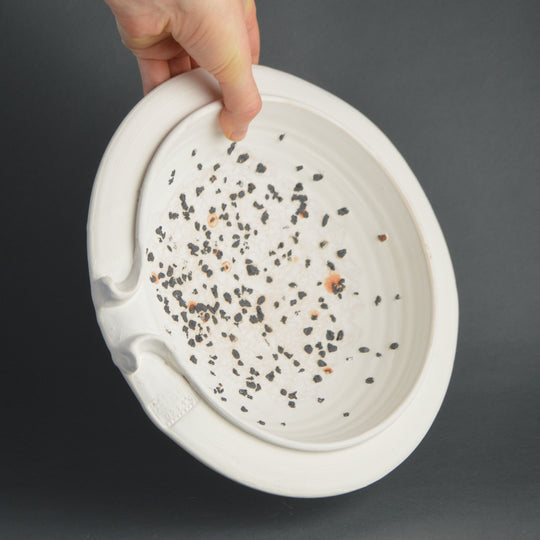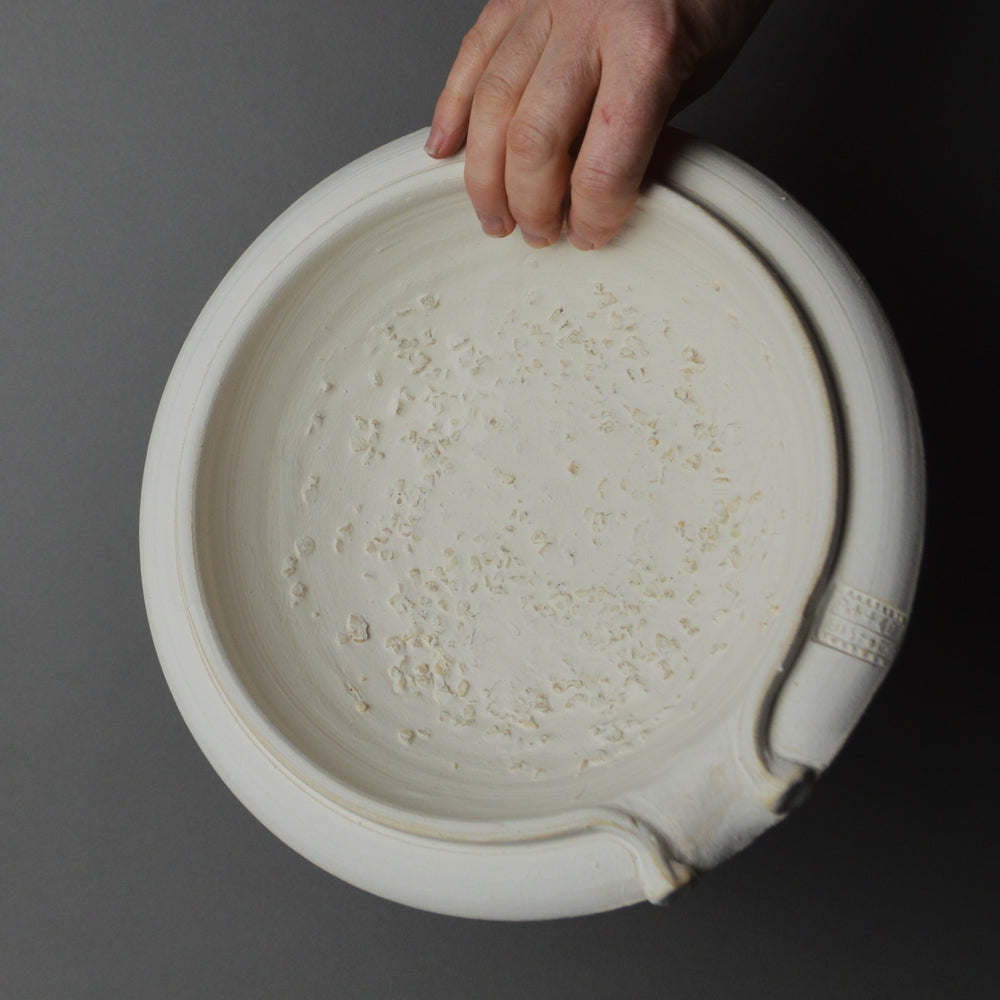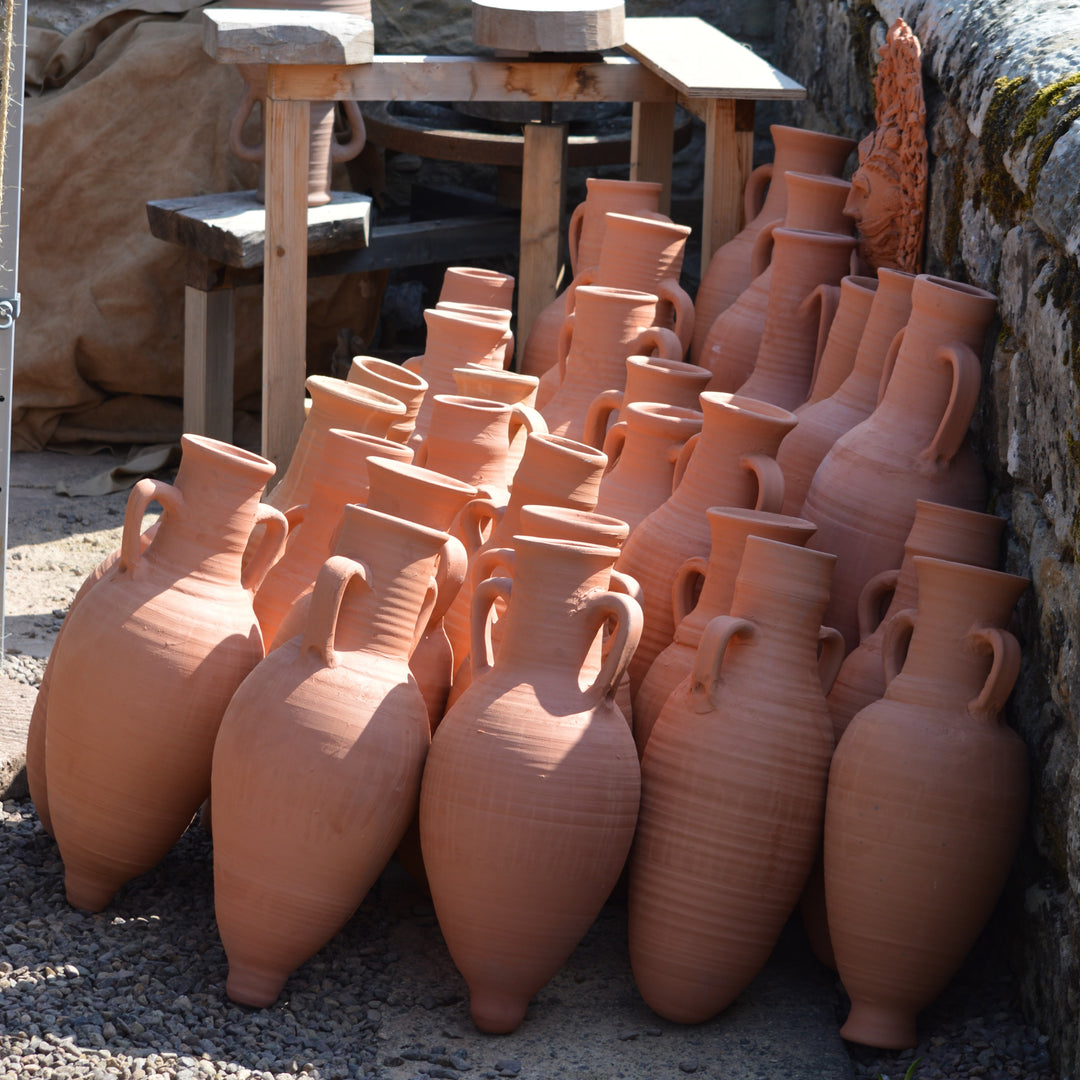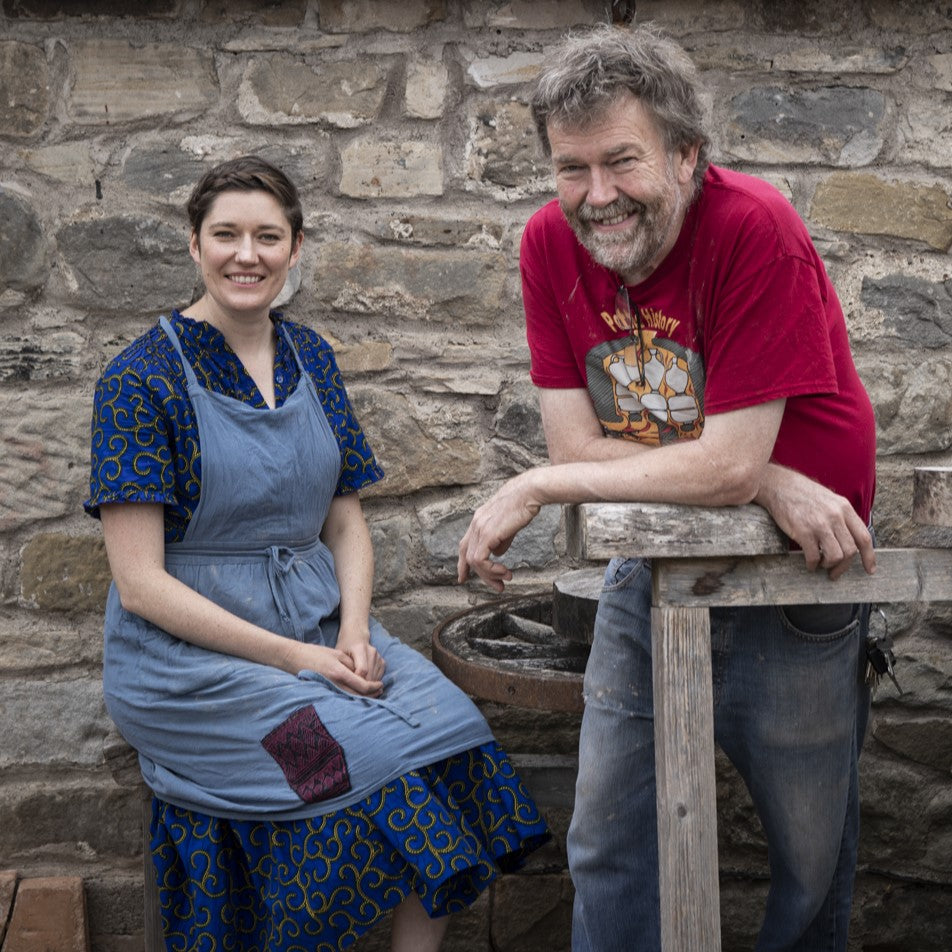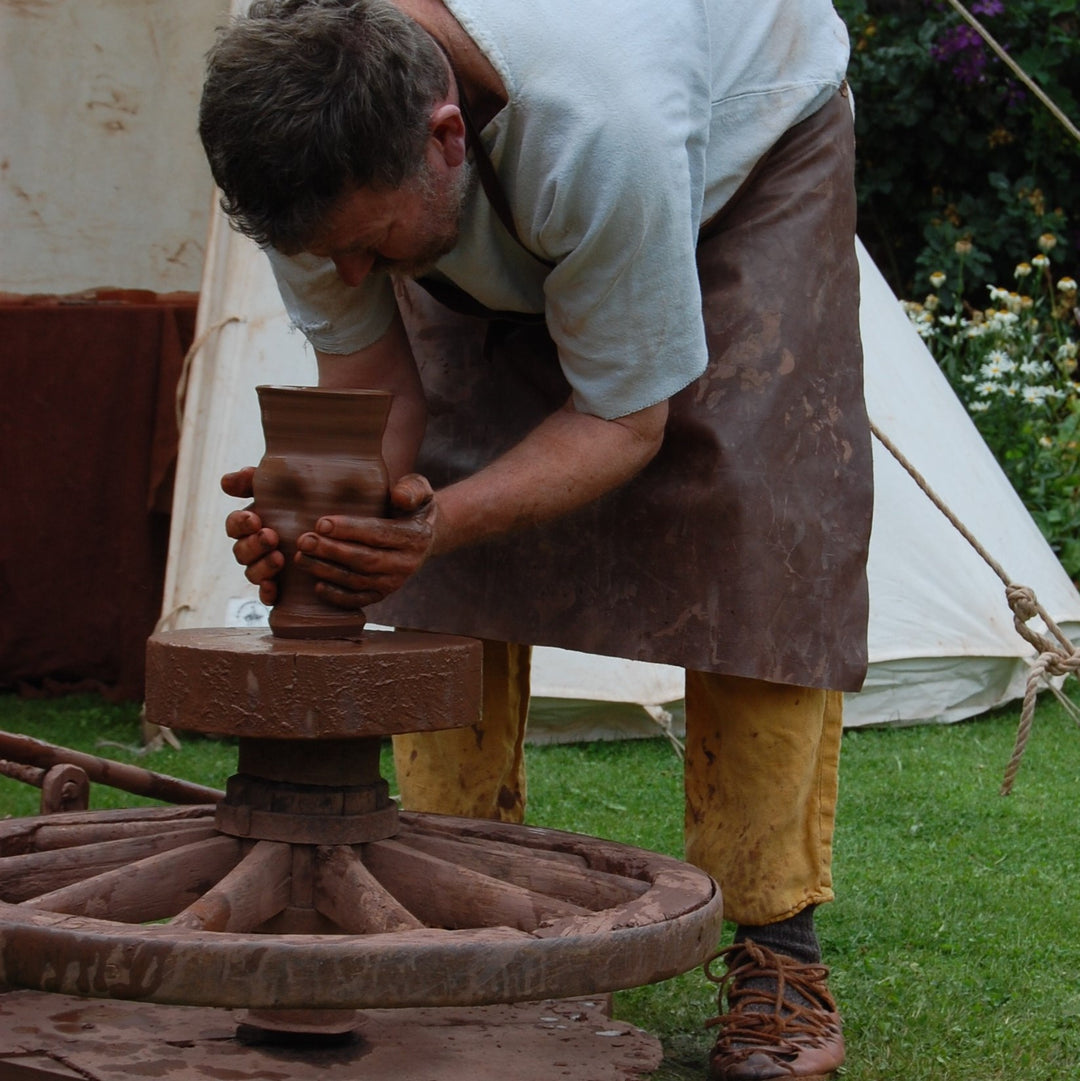Roman Mortarium / Mortaria
Handcrafted Replica Roman Mortarium – Inspired by Finds from Britain and Gaul
Details
Food is more than just sustenance—it connects us to home, family, and tradition. The Romans understood this deeply, bringing their culinary culture with them to Britain, including a wide array of cooking utensils and tools.
One such essential tool was the mortarium, used to grind herbs and spices against the coarse quartz grit embedded into the bowl's surface—functioning as an ancient food processor.
Initially, these vessels were imported from East Gaul, but as Roman life in Britain developed, local potters began producing their own versions. Notable production sites have been identified in the Nene Valley (2nd–4th century AD) and near Crambeck, Yorkshire (2nd century AD).
This museum-quality replica is based on Form 43, a style widely used across Roman Britain.
Materials
- Earthenware terracotta with quartz grit
Dimensions
- Height: Approx. 80 mm
- Diameter: Approx. 255 mm
Production
Each piece is handcrafted in Northumberland by Potted History, following the techniques of ancient Roman potters.
This replica Roman mortarium has been fired at 800°C–1000°C to authentically replicate Roman firing conditions. This process results in natural variations in surface colour and texture, just as seen in original Roman pottery, ensuring each piece is unique.
Health & Safety
This museum-quality replica has been made using authentic Roman tools and techniques.
- Not food safe: Due to its porous nature, this vessel does not meet modern health and safety standards for food use.
- For display and experimental archaeology purposes only: While some enthusiasts use these replicas for experimental archaeology, doing so is at your own risk.
- Ancient food safety: The Romans ensured food safety by heating their pots and contents to over 70°C for at least 10 minutes, with 100°C or higher offering additional protection.
- Preparation tip: Ancient cooks would grind down the internal surface with a pestle before first use to remove any loose grit and avoid dental emergencies!
Ordering Information
- 'Add to Basket' Items: Ready to ship immediately.
- 'Pre-order' Items: Handmade to order within 90 days (longer for international orders). If your order includes both 'Add to Basket' and 'Pre-order' items, they will be shipped together once all items are ready.
Shipping
- All items are sent via second-class postal service as standard.
- If you require first-class shipping, please contact us for a custom quote.
- Postage Note: All items are carefully packaged to ensure they arrive in perfect condition.
Own a piece of Roman culinary history with this beautifully handcrafted mortarium. Order today and bring the art of ancient cooking into your collection!
SHIPPING
'Add To Cart' items are ready to send straight away. Please be aware that if bought alongside 'Pre-order' items, your order will be sent when all items are ready.
'Pre-order' items are made to order, and we will dispatch them as soon as we have handcrafted them for you; this usually takes 90 days, but international orders can take a little longer.
We ship our fabulous replicas worldwide.
Shipping costs are worked out during checkout. They are based on where you are in the world and how heavy your parcel is, which can be very variable.
All items are sent using a second-class postal service. If you wish to have an item sent first class, please contact us for a quote. Many Thanks
RETURNS
If you aren't completely satisfied with your Potted History piece, please get in touch to organise a return. Email us at
clare@rothburycreates.co.uk
Then you can send it back at your own cost in an unused condition within 30 days, and we'll refund you for the cost of the item or items returned. If you include your order number with the returned package, that will speed things up. Please leave any original packaging intact.
Our returns address is:
Potted History, Gregory Court, Rothbury, Northumberland, NE65 7SW
PRODUCT VARIATION
Please be aware that due to items being handmade and finished, colour variations will occur during the making process, and each replica will have some differences. Also, know that the item photographed may not be the one that you receive, and colours can appear differently on different screens. Please ensure you look at all the images to get a fully formed idea of the item you are ordering as we try to capture the variations within the images we share. If you prefer a specific colour variation, please contact us before ordering.
